CMN 225
Communication in Place

1. Course Description
Where does communication happen? This course examines how place and environment shape the communicative practice. Using concepts from rhetoric, cultural studies and various communication theories, students will develop an understanding of the “communication environment,” and how to consider environmental constraints and factors when constructing meaningful messages for audiences. The course uses examples from popular culture, economics, politics, architecture, science, and technology to help students understand the importance of place in the process of communication.
Last Revised
Delivery
Lecture: 2 hours, Lab: 1 hour
2. Course Objectives & Learning Outcomes
- Give students a theoretical foundation in critical concepts in media, communication and rhetorical studies
- Help students understand the role of physical and cultural situations and spaces in the crafting of persuasive messages
- Provide students with skills in analytical writing and composition
3. Topics Covered
- Communication in the cultural environment
- Introduction to ideology
- High and low culture
- Globalization and communication
- Politics, place and communication
- Rhetorics of time and Space – kairos – the rhetorical situation
- Public sphere and private sphere
- Political structures and communication constraints
- Communication and media spaces
- Society and Spectacle
- Where we watch, where we are watched – where we “do” media
- Communication in the built environment
- Geography and digital communication technologies
- Architecture as communication
4. Teaching Method
Graded Assignments
Students will complete two longer written assignments, and will have weekly “Think Papers” on the theoretical topics, perform one oral presentation, and write one final exam. Additional work relating to the topics may also be assigned by the instructor. The weighting of each assignment will be announced by the instructor.
5. Course Materials
Course reading materials may be provided in electronic form OR in a reading package titled CMN225: Communication in Place.
6. Policy
6.1 University Policies
Students are required to adhere to all applicable university policies found in their Online course shell in D2L and the Course Outline Policies.
6.2 Print and Digital Copying Guidelines:
Toronto Metropolitan University complies with Canada’s Copyright Act which protects both creators/owners and users of copyrighted materials. Students should familiarize themselves with TMU Copyright policies and procedures, and contact the Copyright and Scholarly Engagement Librarian at copyrt@torontomu.ca for questions, concerns and clarification of the copyright rules.
6.3 Turnitin.com
Turnitin.com is a plagiarism prevention and detection service to which Toronto Metropolitan University subscribes. It is a tool that helps instructors determine the similarity between student work and the work of other students who have submitted papers to the site (at any university), Internet sources, and a wide range of books, journals, and other publications. While it does not contain all possible sources, it gives instructors some assurance that students’ work is their own. No decisions are made by the service; it generates an “originality report,” which instructors must evaluate to judge whether something is plagiarized.
Students agree by taking this course that their written work will be subject to submission for textual similarity review to Turnitin.com. All submitted papers will be included as source documents in the Turnitin.com reference database solely for the purpose of comparing the similarity of such papers. Use of the Turnitin.com service is subject to the terms-of-use agreement posted on the Turnitin.com website. Students who do not want their work submitted to this plagiarism detection service must, by the end of the second week of class, consult with their instructor to make alternative arrangements. Even when an instructor has not indicated that a plagiarism detection service will be used, or when a student has opted out of the plagiarism detection service, if the instructor has reason to suspect that an individual piece of work has been plagiarized, the instructor is permitted to submit that work in a non-identifying way to any plagiarism detection service.
6.4 Email Communication
Toronto Metropolitan University requires that any official or formal email communication from students be sent from their official Toronto Metropolitan University electronic accounts.
6.5 Video and Audio Recording
No video or audio recording is permitted in class without the express permission of the instructor.
7. Learning Management System
Toronto Metropolitan University supports Brightspace by D2L as its official Learning Management System. University Policies governing Brightspace have been documented at the Courses @ Toronto Metropolitan University Privacy and Security website.

